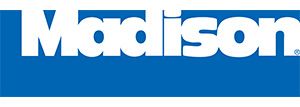Stay Connected
Thank you for contacting us.
We will get back to you as soon as possible
We will get back to you as soon as possible
Oops, there was an error sending your message.
Please try again later
Please try again later
Home / Products / Continuous Level / Ultrasonic
Ultrasonic Level
Madison's ultrasonic sensors reduce process variability and are unaffected by the target material’s color, shape, or physical composition. Therefore, there's less waste, higher quality, and lowered costs for OEMs.
Ultrasonic sensors continuously measure semi-solid, corrosive, and viscous media, slurries, and even some solids. They can be used indoors or outdoors, are low maintenance, and can be cost-effective in demanding applications.
Benefits of Madison's ultrasonic sensors:
- Non-contact measurement for thick, sticky, film-causing, solid or semi-solid liquids
- When tanks are in remote areas
- When moving parts could stick
- Push-button programmable
-
U3M Series
Download DatasheetSmall Tanks
PVC
Sensing range to 6'
-
U5098 Series
Download DatasheetIndustrial & Large Tanks
Polypropylene
Sensing range to 32'
U3M Series
U5098 Series
t: 800 466 5383
t: 203 488 4477 Outside the USA
e: info@madisonco.com


